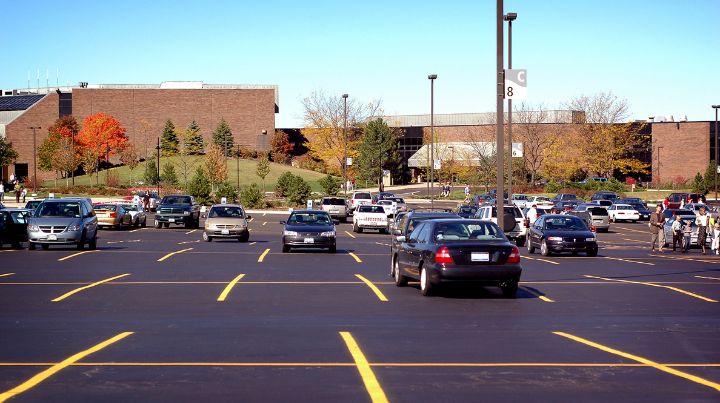Techniques For A Safer Commute

As Americans, we spend an average of an hour a day commuting in our cars. Where I live and work, people can spend as much as 3 hours on the road one way to get into DC, depending on the time of day and traffic. Now add taking kids to school and activities, running errands, and a greater desire to travel by car over the hassles of flying. For those of you who work in transportation or delivering goods, you spend over ⅓ of your day on the road. Here are some simple tips for all of us to improve our safety while on the road.
Know Your Vehicle
First and foremost, know the functions and limitations of your vehicle. We can start with the driving capabilities. Acceleration, braking, handling, and ground clearance knowledge will be necessary if you ever have to employ defensive driving skills. If you ever have a chance to attend a defensive driving course, it will change the way you look at cars.
Next, we should be familiar with the safety features, specifically the door locks and handles. Some might scoff at this, but how many of us know where the locks are located in the back seat of our car? Does your car even have manual locks for the rear passengers to unlock? When do your doors automatically lock? When placed in drive? Or after exceeding 10 MPH? This will be especially important when renting a vehicle or riding in an unfamiliar one. How many times have you pulled up to a stop light and had someone approach the car while you panicked to find the lock mechanism?
Leave Yourself Some Room
Building on knowing your vehicle’s capabilities, be honest with your own skills. Most of us get lucky driving to close the car in front of us, beyond our ability to react and the vehicle’s capability to stop or turn. Give the car in front of you the space we were taught in Driver’s Education. It is suggested to keep at least 3 seconds of space between you and the vehicle in front of you and one car length per 10 MPH of speed. This accounts for reaction time and deceleration. At stops and slow speeds, leave enough room to maneuver around the car in front of you or exit the lane. Usually, this means stopping so that you can still see the vehicle’s rear tires in front of you. This will allow you to try and avoid people approaching your stopped vehicle and those motorists about to rear-end you. Don’t forget that all of our skills and vehicle capabilities are affected by the weather and road conditions, usually negatively.
Limit Distractions
Limit your distractions when driving. Almost ½ the drivers I encounter on my way to work are on their phones. Other distractions include: eating, hygiene, talking to passengers or on the phone, or staring at things that aren’t on the road. Remember, we are driving with the assumption the other driver is paying attention and avoiding driving into us. We shouldn’t have time for distractions. We should be paying attention to the road and environment around us. Ever notice how long it takes people to pull over and yield to a police car or ambulance? Both vehicles have sirens and bright flashing lights, yet people still don’t see them.
When you get in your vehicle, adjust the mirrors so you can see as much of the surroundings as possible. While driving, scan your mirrors. Look ahead of your path for potential dangers or obstructions to your vehicle or pedestrians and vehicles that could move into your path.
If you are in the passenger seat, be a good passenger. Don’t be the cause of the driver’s distractions, and assist in keeping an eye out. This has been especially helpful overseas, where traffic is thick, unpredictable, and changes quickly.
Know Where You’re Headed
Be familiar with your route. Look at the route on your app before just pressing “starting route.’ This will help limit distractions while using the app and give you more time to prepare for upcoming turns. If possible, vary your daily commute route to avoid being predictable and susceptible to crime or attacks. If you can’t vary your routes, vary your travel times. Even changing your departure time by 30 mins can avoid potential surveillance and create unpredictability in your daily patterns.
Parking
Things to consider when parking your vehicle. Park in well-lit, high-visibility locations. Drive through the parking spot or back in so you can exit with good situational awareness. Take a look around, utilize your mirrors, and get an idea of your surroundings before unlocking and exiting your vehicle. Same when you are returning to your vehicle, head up, keys in hand, ready to unlock and enter your vehicle.
Final Thoughts
We are all guilty of violating several of these tips, but the more we can do on a regular basis, the safer we will be when traveling or commuting. Try just implementing a few at a time and add more as they become part of your daily routine. Stay safe.
Additional Resources:
- Defensive Driving: Steer Clear of Disaster
- What’s In YOUR Emergency Essentials Car Kit?
- The Lost Art of Paying Close Attention to Your Situation
- How To Use a Map

Don't Miss Out!
Join the thousands of people who rely on Mind4Survival preparedness advice by subscribing to our FREE newsletter.
- Practical preparedness information
- Zero Spam
- < 0.25% of people unsubscribe




Join Mind4Survival!
Stay informed by joining the Mind4Survival! 100% Secure! 0% Spam!
Follow Us!
Affiliate Disclosure
Mind4Survival is a free, reader-supported information resource. If you make a purchase through our link, we may, at no cost to you, receive an affiliate commission.




Great topic. Unfortunately, no matter how much we prepare, idiots are still driving distracted. Its a daily exercise to practice defensive driving and learn new variables. Lose the maps and learn your local area. Im all for leaving room to escape at an intersection. Great job guys putting this together.